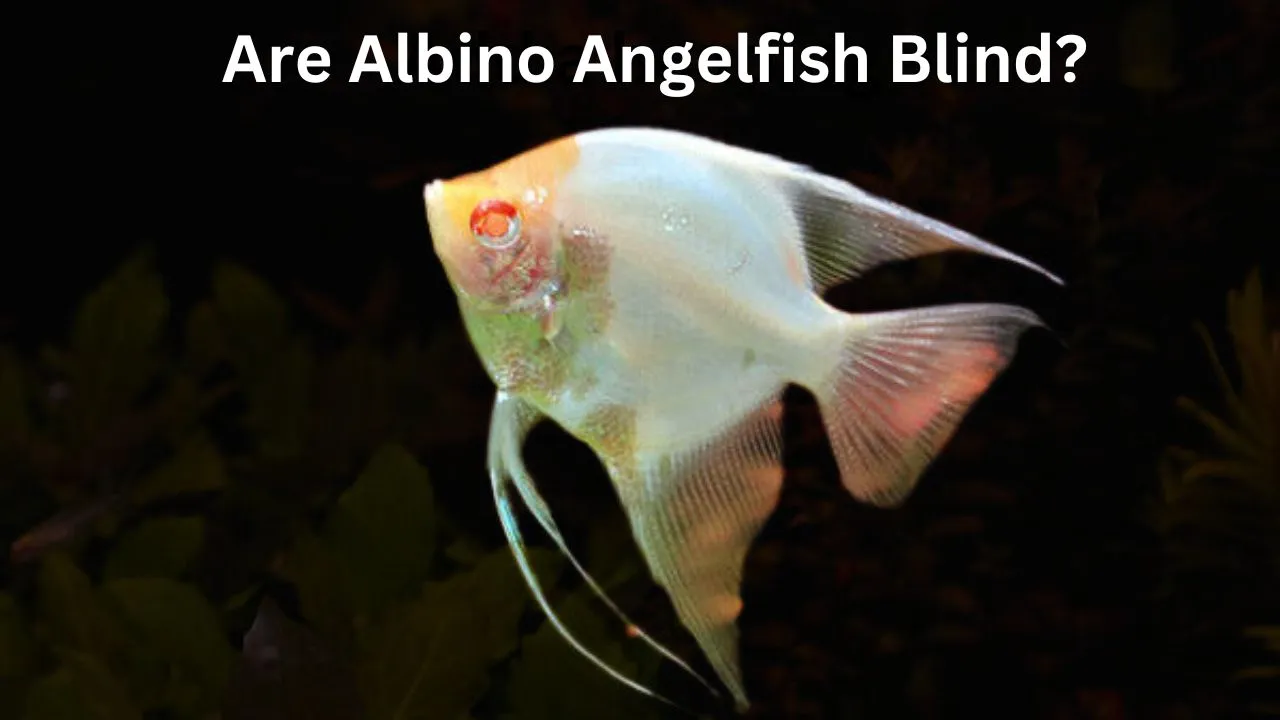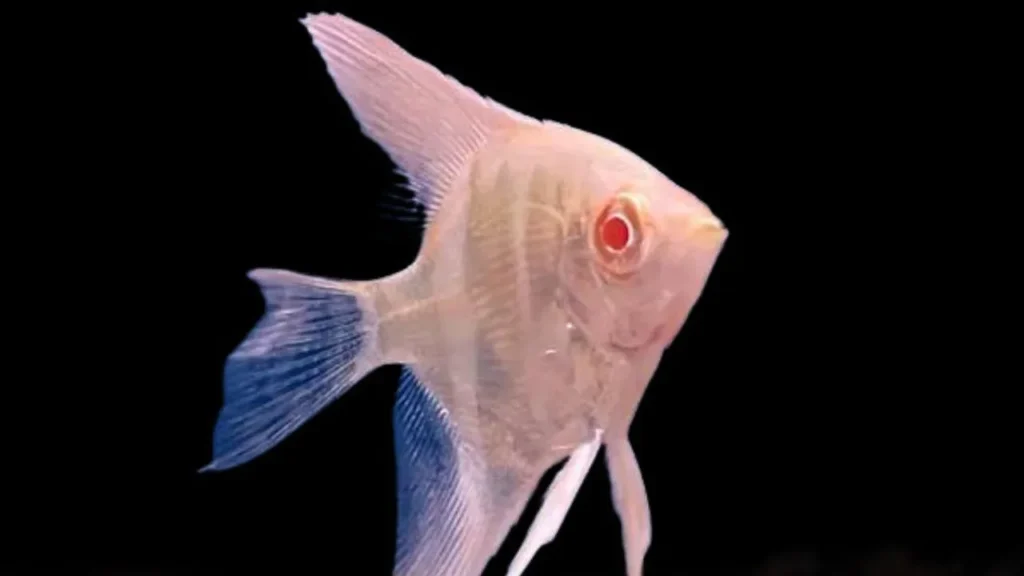
Welcome to the complete care guide for keeping albino angelfish! These striking all-white fish with reddish eyes are an eye-catching addition to any freshwater aquarium. However, caring for albino angelfish requires meeting some specific needs.
In this beginner’s guide, you’ll learn everything about albino angelfish including ideal tank size, expected lifespan, how rare they are, their growth rate, diet, behavior, price, and more. With the right setup, albino angelfish can thrive for years.
How Rare Are Albino Fish?
True albino fish with genetics that inhibit melanin and cause an all-white appearance are relatively rare. Selective breeding programs exist to increase the occurrence of albino strains, but they remain somewhat uncommon.
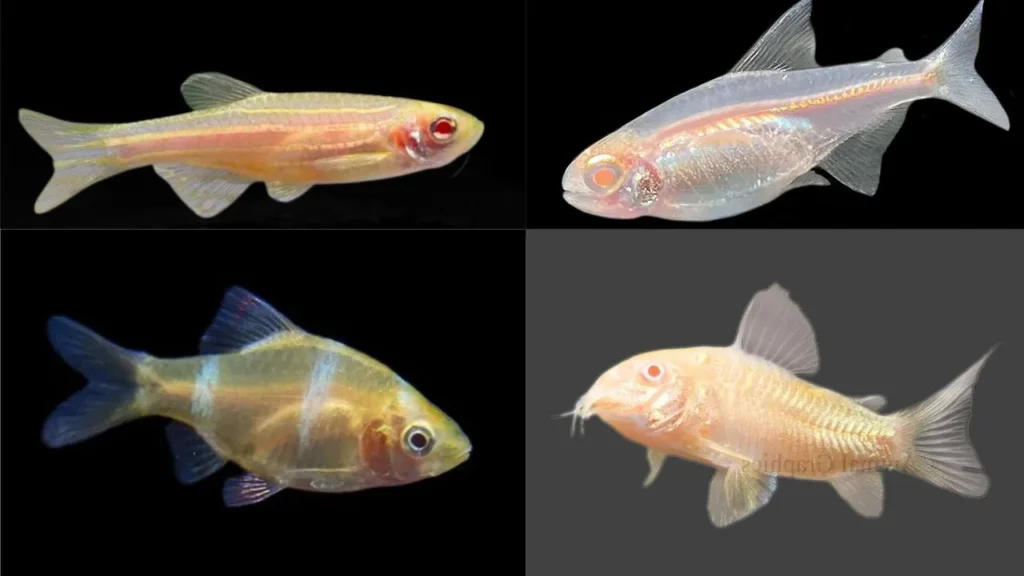
The rarity of naturally-occurring albino fish depends on the species. Albino strains are more prevalent in certain popular aquarium species like angelfish, tetras, danios, barbs and livebearers.
Other species with lower rates of albinism include catfish, cichlids and larger fish. Even within targeted breeding programs, albino offspring only occur a portion of the time.
So in the aquarium trade, albino varieties are not extremely rare, but they are also far from common. Their unique look continues to make them sought-after by fishkeeping enthusiasts.
How Do You Know If Your Fish Is Albino?
Here are the telltale signs that indicate a fish is an albino variety:
- Entirely white body lacking any black or yellow pigmentation
- Bright reddish-orange, pink or ruby eyes
- Poor eyesight, especially sensitivity to light
- Paler fins than colored varieties
- Trouble competing for food against normal fish
Not all white fish are truly albino. Some fish naturally have a pale white color like white cloud mountain minnows. But albino strains will show that iconic pink/red eye color.
How Long Do Albino Angelfish Live?
Albino angelfish have a similar lifespan to regular angelfish, which is typically 10-15 years with proper care. Some may even exceed 15 years in optimal tank conditions.
To help your albino angelfish reach their full lifespan potential, focus on providing:
- A sufficiently large tank
- Excellent filtration
- Consistent water changes
- High water quality
- A varied, protein-rich diet
- Proper heating and pH
With a well-maintained aquarium, it’s possible for albino angelfish to live a decade or longer. Monitor your fish for signs of disease and treat any issues promptly. Doing this along with proper general care will give them the best chance of a long, healthy life.
What Size Tank Do Albino Angelfish Need?
Albino angelfish need at least a 29 gallon aquarium when fully grown, but a larger tank is always better. Aim for the following tank sizes:
- Minimum 29 gallons for a single angelfish
- 55 gallons for a pair or small group
- 75 gallons or more for a larger community
Angelfish can reach up to 6 inches in length with flowing fins that need swimming space. A tank size of at least 48 inches long is ideal as it allows multiple fish plenty of territory.
Taller tanks are better than standard long tanks, as angelfish prefer height over length. Just make sure the tank is wide enough to accommodate their dorsal and anal fins.
While juvenile albino angelfish can be kept in a 20 gallon tank temporarily, they will soon outgrow smaller setups. Invest in the largest tank possible right away to avoid frequent upgrading.
Read More: Complete Angelfish Tank Setup.
How Big Do Albino Fish Get?
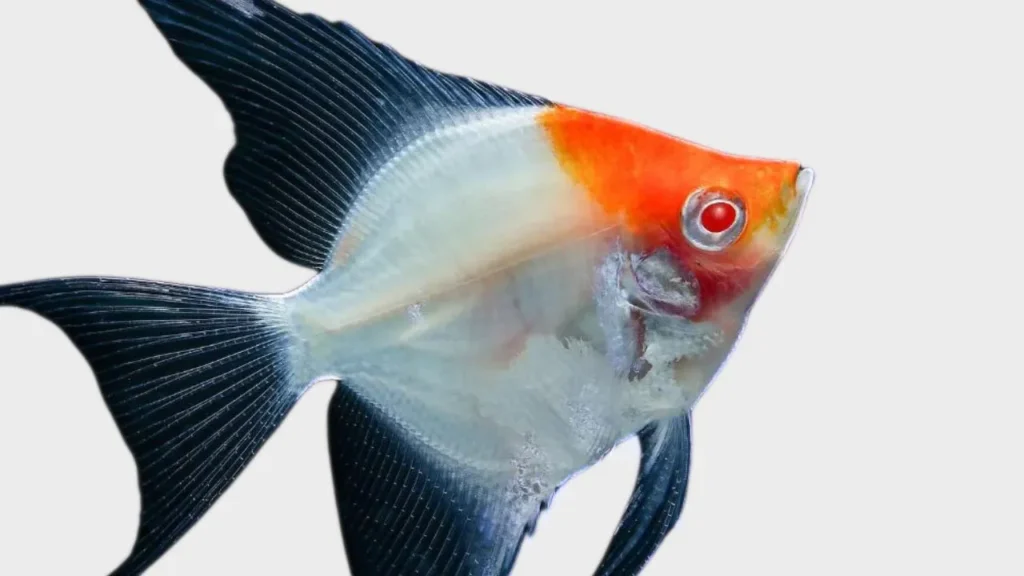
The maximum size of albino fish is similar to their normal pigmented counterparts. Selective breeding for the albino trait does not typically change the fish’s innate growth rate or genetics related to size.
For example, albino angelfish reach the same 6 inch length as regular angelfish. Albino varieties of tetras, barbs, goldfish, etc. will hit normal maximum lengths.
The albino mutation mainly impacts coloration and eye development rather than physical growth. With good nutrition and tank space, albino fish can achieve their expected adult dimensions.
Read More: How big does angelfish get?
Are Albino Fish Aggressive?
Albino fish do not tend to be more aggressive than their regular pigmented versions. Some species like albino tiger barbs retain the same feisty temperament, while others such as albino Corydoras catfish remain peaceful.
However, albinos of predatory species may actually show slightly reduced aggression. The reason is their poor eyesight makes them less adept hunters. This includes fish like albino red tail catfish and albino rainbow sharks.
If keeping aggressive albino varieties, be sure to have tank mates that can handle themselves against bullying. Avoid passive community fish that may become targets.
What Do Albino Fish Eat?
The diet of albino fish is the same as regular varieties – no special albino food needed! Offer a high quality flake or pellet along with:
- Live foods: brine shrimp, bloodworms, daphnia, etc.
- Frozen foods: shrimp, krill, spirulina, prepared cubes.
- Veggies: blanched zucchini, cucumber, shelled peas.
For best nutrition, provide a varied menu. Herbivore albino pleco and cory will also appreciate algae wafers. Carnivores like albino oscars need extra protein from meaty options.
Feed juveniles smaller foods 3-4x daily, reducing to 1-2x for adults. Ensure food sinks quickly so vision-impaired albinos can find it easily.
Are Albino Fish Weaker?
Albino fish are not inherently weaker, though they may be slightly more vulnerable to health issues. Lack of pigment leaves them sensitive to bright light and more prone to sunburn or eye damage. Stress and injury can be harder for their immune system to combat.
However, with good care albino fish can be quite hardy. Focus on the following to support their health:
- Avoid direct sunlight on the tank
- Provide hiding spots and dim lighting
- Maintain excellent water quality
- Quarantine new fish
- Quickly treat any diseases
- Feed a nutritious diet with supplements
While their appearance is different, albino fish are just as strong as their natural colored counterparts with proper aquarium care. Do not view them as being defective or inferior.
What Color are Albino Fish?
The defining color of true albino fish is solid white or very pale cream. This is due to a total lack of melanin skin pigment caused by genetic mutation.
Albino fish may show some faint yellowish or pinkish undertones on their body and fins. The eyes are most often a bright ruby red or orange shade due to blood vessels showing through.
Normally black markings like stripes and spots will be missing or extremely faint in albino strains. The gills may also appear more pinkish than dark red.
Overall albinism results in a washed out, dilute appearance compared to the bold intense colors of regular fish varieties.
Are Albino Angelfish Blind?
Albino angelfish are not completely blind, but they suffer from very poor eyesight compared to pigmented types. The lack of pigment in the iris leaves their eyes overly sensitive to light.
Albinos are especially handicapped in brightly illuminated tanks. Bright glare and sunlight makes it hard for them to see. They may appear to be aimlessly bumping into objects.
You can help albino angelfish by:
- Keeping tank lighting dim and providing shaded areas
- Using dark colored substrates and decor to reduce glare
- Placing floating plants on the surface to filter bright light
- Rearranging decor frequently so fish can mentally map the tank
- Ensuring all foods sink quickly to the bottom for easy locating
- Adding supplemental vitamins to their diet to support eye health
- Monitoring water parameters to avoid conditions that could worsen vision
- Avoiding direct sunlight on the aquarium
With some adjustments to reduce glare and supplement their diet, albino angelfish can navigate a tank pretty well. Their eyesight will never be perfect, but these steps can improve their ability to see. Be patient with their vision challenges and do not mistake it for lack of intelligence. With the right care, albino angelfish can thrive.
Do Albino Fish Have Pink Eyes?
Many albino fish display reddish-pink eye coloration, though shades range from deep red to pale orange. The pinkish tone stems from blood vessels and circulation that become visible without melanin pigment obscuring them.
However, not all albino fish have pink eyes. Some have extremely reddish eyes that appear more ruby colored. Yellowish-orange albino eyes also occur.
The paler the body pigment, generally the lighter the eye color. But environment and genetics also play a role in eye shade.
Do Albino Fish Have Red Eyes?
Solid red eyes are common in albino fish, especially those with pure recessive albino genes. The complete lack of melanin results in the transparent appearance of the blood rich irises.
Red shades can range from bright crimson to deep burgundy. Opaque white or blue eyes seen in some fish varieties will instead turn red when the albino trait is present.
Albino fish don’t always have red eyes, but it is considered the most classic and defining eye color. Solid ruby red eyes paired with an all-white body is a sure sign of albinism.
Albino Angelfish Breeding
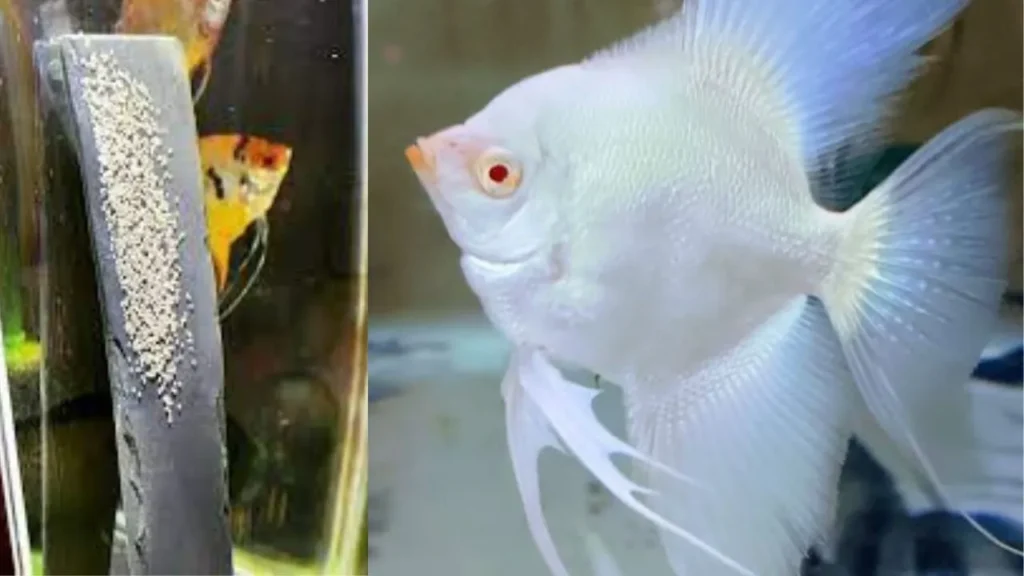
Selectively breeding angelfish to produce albino offspring takes patience and effort. Here are some tips for success:
- Start with high quality, vigorous breeding pairs showing strong signs of albinism
- Provide perfect water conditions, feeding, and maintenance to support breeding
- Use a 20-30 gallon tank with smooth vertical surfaces for spawning
- Look for reddish eyes and diluted color in fry as signs of the albino gene
- Remove parents after spawning to prevent eating eggs/fry
- Raise fry carefully in a separate nursery tank
- Repeat the breeding process using your best albino offspring
With each successive generation, isolate the whitest, reddest-eyed angelfish to intensify the albino characteristics. Cull any dark colored or deformed fry.
Also Read: Angelfish Breeding Season Behavior and More…
Albino Angelfish Freshwater Care
Caring for albino angelfish in a home freshwater aquarium requires paying special attention to their sensitivity:
- Soften aquarium lighting or provide plenty of hides. Avoid direct sunlight.
- Use dark substrates and décor to reduce glare. Add floating plants.
- Offer a varied, vitamin-enriched diet to support their health.
- Quarantine new fish and medicate at the first signs of illness.
- Maintain pristine water quality with frequent testing and partial water changes.
- Keep water movement low and provide resting spots near the bottom.
- Monitor water parameters daily at first to ensure stability.
While albinism does not directly impact captive lifespan, their appearance means albino angelfish need extra care and consideration to thrive. But their beauty makes the additional effort well worth it for most aquarists!
Also Read: Freshwater Angelfish Care Guide.
Are Albino Fish Expensive?
On average, albino freshwater fish cost 1.5 to 3 times as much as regular varieties. Some specific examples:
- Albino tiger barbs – $5 each compared to $2 for normal
- Albino cory catfish – $8 instead of $4
- Albino angelfish – $30 vs. $15 for standard color
The higher expense is due to the intensive breeding required to produce albino offspring. They are in lower supply but higher demand.
Rarer varieties tend to cost more, with albino oscars near $100 each. Show quality specimens with vibrant color and perfect form fetch the highest prices from collectors and enthusiasts.
Final Words.
Albino angelfish are a stunning variety that can make a dramatic addition to planted freshwater aquariums. However, their lack of protective pigment means keeping them healthy takes some extra care and consideration. By providing a sufficiently large tank, dim lighting, a nutritious diet, and excellent water conditions, albino angelfish can have a long, rewarding lifespan. Learn everything you can about their needs before bringing home these visually striking fish. While albino angelfish demand more from aquarists, their beauty and graceful movements make the effort worthwhile. With the proper setup and care, albino angelfish can be a prized part of collections for years.

